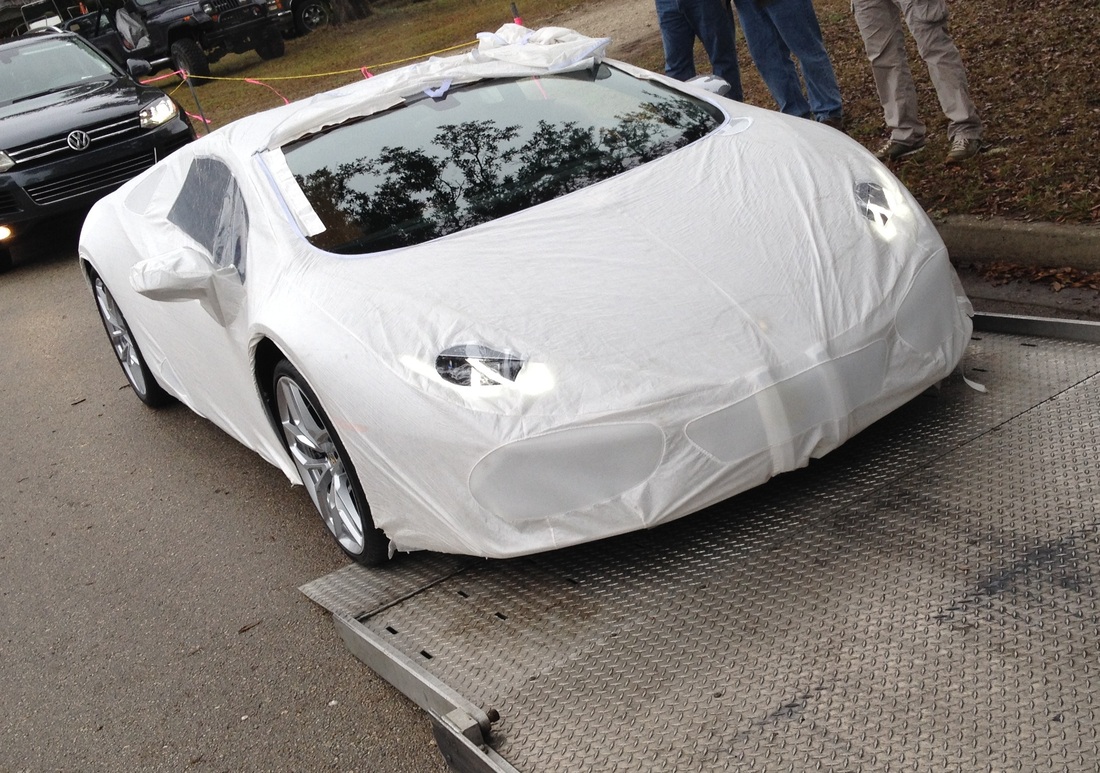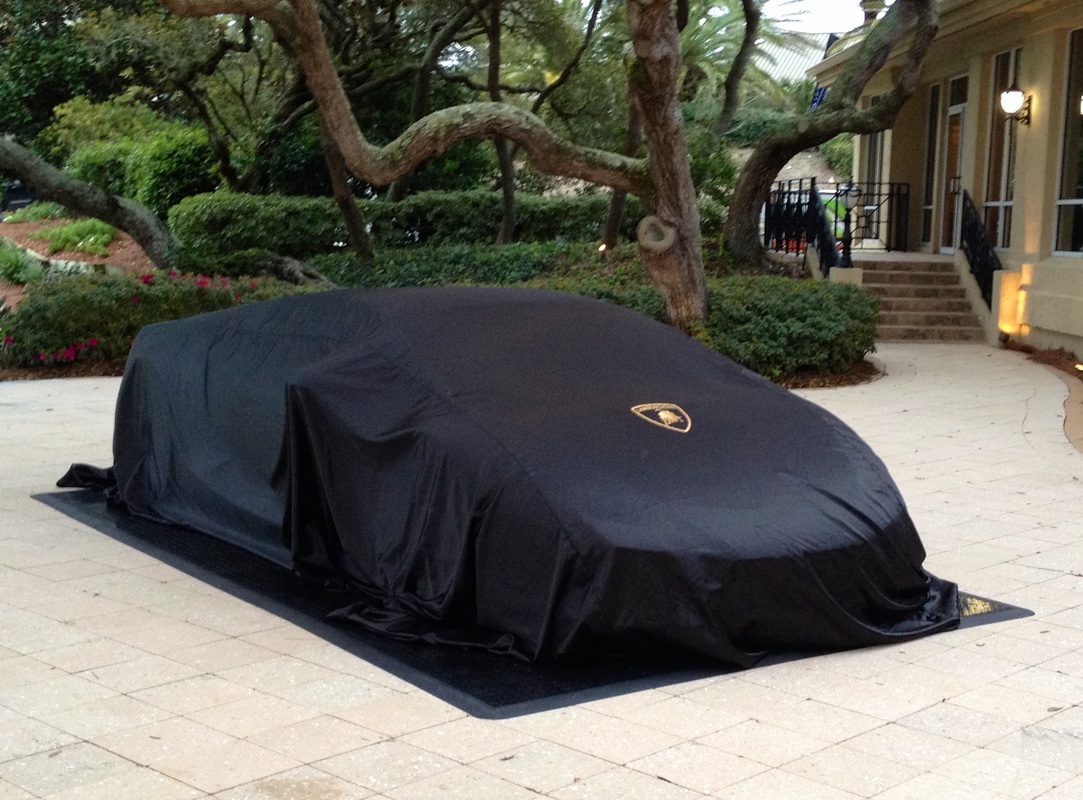|
George Vosburgh of Pittsburgh, PA is restoring his 1977 Ferrari 308 GTB with NJB Automotive in Columbus, OH. It's going to be a full ground up restoration and shown for the first time at the Cortile in 2014. According the George, the paint, suspension are done, the engine is complete. They've used high compression pistons, steel valves, electronic ignition. You can stay up-to-date on George's restoration on Ferrari Chat 77GTB #21039 Restoration
1 Comment
Written by Bernard Martin I had the unique opportunity to visit The Amelia Island Concour's d' Elegance and witness the unveiling of the new Lamborghini Huracán. To say that I was very impressed would be an understatement. Was I impressed by the car? Of course. But that was not what impressed me the most. I'll explain a bit on that later, but first a bit about the Huracán. Back in 2010 Automobili Lamborghini S.p.A President & CEO Stephan Winkelmann said that the sports car market's top design priorities were "Top speed was number One. Acceleration is number Two and then comes handling," In the future "Handling is going to be number One. Acceleration is Two and Top Speed is number three" I must say that the Huracán appears to be the embodiment of that ethos.
Huracán is Spanish for hurricane but, as with all Lamborghini car models, this one is inspired by a Spanish fighting bull. According to Automobili Lamborghini S.p.A.: "The fighting bull Huracán of the Spanish Conte de la Patilla breed was known for his outstanding courage and strong sense of attack. He fought in Alicante in August 1879, showing his unrelenting character and remaining defiant and invincible, thus entering into the legend of fighting bulls' history."
What's LP 610-4 stand for? "LP" stands for "Longitudinale Posteriore," which is a snazzy way of saying that it's a mid engined, longitudinally mounted motor (the crankshaft is oriented along the long axis of the vehicle, front to back). The Huracán motor is a V10, naturally aspirated 5.2 L. It's tuned for 610 PS (449 kW; 602 hp). The Huracán's top speed is over 202 mph (325 km/h). It can accelerate from 0 to 62 mph (100 km/h) in 3.2 seconds and from 0 to 124 mph (200 km/h) in 9.9 seconds. With a dry weight of 3,135 lb (1,422 kg), it enables a power-to-weight ratio of 5.1 lb (2.33 kg) per horsepower. The Huracán has electronically controlled all-wheel drive, which aims to increase the traction on various surfaces and the overall performance of the car. That "all-wheel drive" part is what that last "-4" means by the way. As anyone who's met me for the first time near your car, you'll probably recall me asking you to "Tell me about your car" or "What do you like most about this car vs that car?" I've come to the realization that the only way to really know what's good or bad about a car is by what the aficionado's of a particular marque have to say about the macchina. To become a true aficionado, in my view, is to have driven and experienced the marque in detail over many years. (Yet another reason I miss Walt Spak.) So, of course, over the course of the weekend I asked those questions a lot. It was interesting to note that the shifting and handling of the Huracán seemed to be at or near the top of Lamborghini aficionado's first comments.
What impressed me the most? Attitude. You can always get a flavor for a company's culture by how that culture is reflected in the employees attitudes and responsiveness. It was the first time that I had had the opportunity to meet any of the Lamborghini corporate folks. When brands become as famous and world renowned as Lamborghini, I had half expected a bit of an arrogant panache. That was not at all what I encountered. I was introduced to numerous people within the company over the course of several days and found that, when chatting, each and every one took the time to answer questions and even find me later to say that they had either found out the answer or wanted to introduce me to the person that has just arrived who could give me the answer. THAT was impressive. It's the kind of responsiveness and nimbleness you expect from a small start up company but certainly not from a company who's parent, Audi AG, sold 1.58million cars last year. Back in 2010 CEO Stephan Winkelmann was asked "What are the key metrics to decide on the future?" He said, "Its about design and performance. These key elements are not going to change" ...as you might have expected, but he also said "We have meetings constantly about the business, it's a constant update even on the strategy because their is nothing fixed. You always have to think again, what you thought six months ago because the world is changing fast." That's the kind of thing that a lieutenant in the German Army who was a paratrooper would say, who understands the importance of speed, responsiveness and adaption to current urgencies. Ironic that Winkelmann was indeed a lieutenant in the German Army who was a paratrooper.
As someone who has spent a career in manufacturing, that sort of attention to detail and responsiveness translates into a great understanding of the market and a customer-to-manufacturing feedback loop that permits big R&D leapfrogs forward in product innovation. …and now, after Winkelmann's comments in 2010, we have the introduction of the Huracán. It may just be one of those very special cars that, one day, 50 years from now, aficionados will marvel at the engineering and handling "of it's day." Huracán "...thus entering into the legend of fighting bulls' history" |
AtributionThis is a compilation of articles from a variety of sources and contributors. Attrition and sources are always provided at the top and/or the bottom of the posting. Archives
June 2024
Categories
All
|

The Pittsburgh Vintage Grand Prix Association is a federally registered 501c (3) non-profit organization with a mission to hold a world-class vintage automotive race event for charity.
Since 1983 this volunteer-driven event has raised over $6 million to benefit autistic and developmentally disabled individuals through the Autism Society of Pittsburgh and Allegheny Valley School. The Pittsburgh Vintage Grand Prix remains North America's largest vintage race event, the only one run on city streets, and the 8th largest car show in the World. |





 RSS Feed
RSS Feed